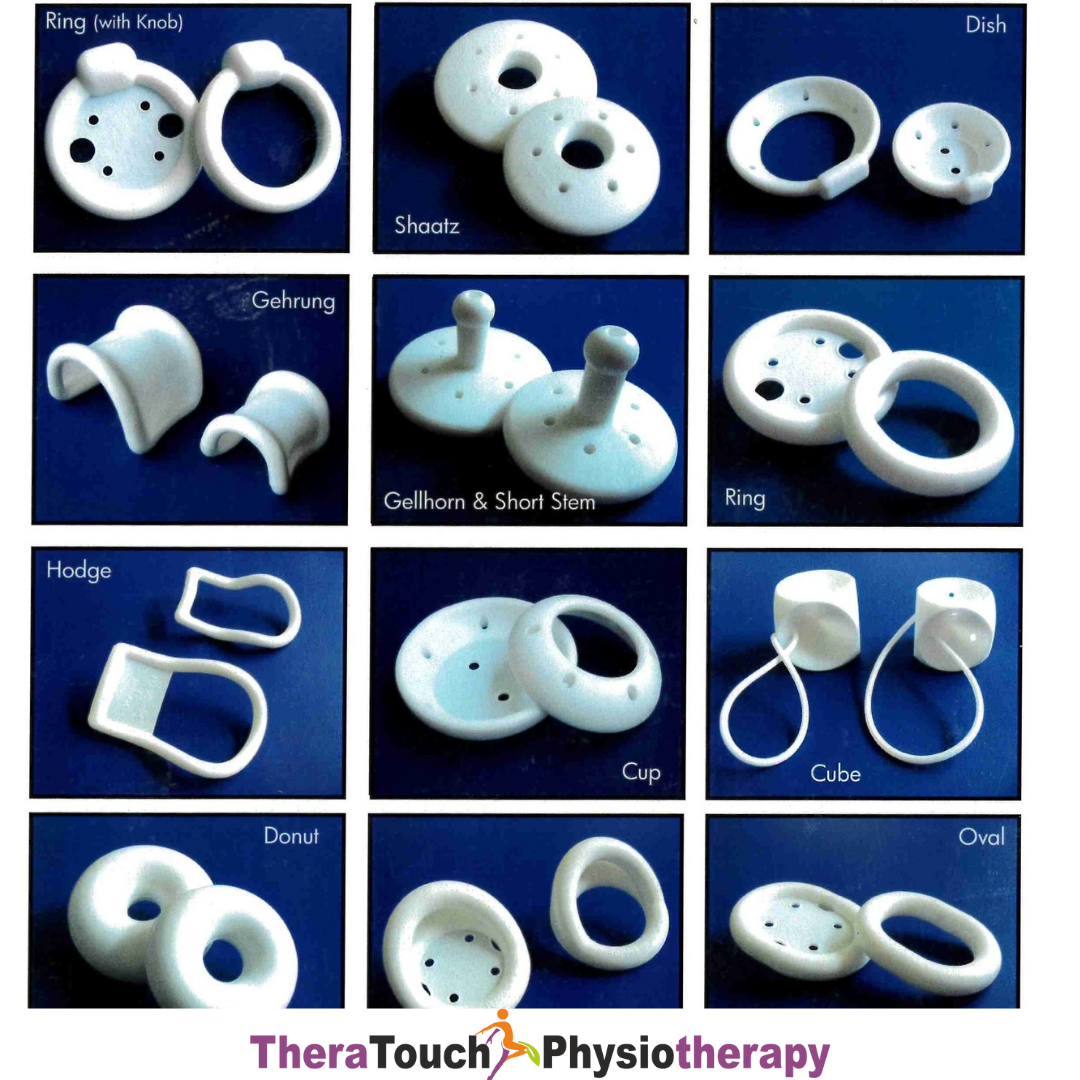Pessaries for Pelvic Floor Support
At TheraTouch Physiotherapy, we understand the importance of pelvic floor health and that is why we bring you the best relief. Pessaries are a non-surgical option for managing pelvic organ prolapse and urinary incontinence. Here’s what you need to know about this method:
What is a Pessary?
A pessary is a medical device inserted into the vagina to support pelvic organs such as the bladder, uterus, or rectum. It helps alleviate symptoms of pelvic organ prolapse and urinary incontinence by providing structural support.
Types of Pessaries
1. Ring Pessary: Circular in shape with a central opening, suitable for mild to moderate prolapse.
2. Gellhorn Pessary: Shaped like a donut with a knob, used for moderate to severe prolapse.
3. Cube Pessary: Square-shaped, ideal for stress urinary incontinence.
How Pessaries Work
- It provides support to pelvic organs, reducing prolapse symptoms.
- Also, it improves bladder control by supporting the urethra.
- It can be used temporarily or long-term, depending on the patient’s condition and preference.
- It allows for normal activities, including exercise and daily routines.
Benefits of Using a Pessary
- It is a non-surgical alternative.
- It can be customizable options to suit individual needs.
- It improves quality of life by reducing symptoms such as urinary leakage and pelvic pressure.
- It may prevent the need for surgery in some cases.
- It can be easily inserted and removed by a trained pelvic floor physiotherapist.
- The patient is taught how to safely insert, remove and care for the pessary.
Risks of Using Pessaries
It’s crucial to discuss any concerns or potential risks with your pelvic floor physiotherapist before starting pessary therapy. With proper guidance and monitoring, the benefits of using a pessary often outweigh the risks for many individuals.
Getting Started:
- Schedule an appointment with one of our experienced pelvic floor physiotherapists for a comprehensive assessment but remember we don’t fit them.
- Our team will determine the most suitable type and size of pessary for your condition and recommend you to a clinic to fit it for you.
- Follow-up appointments will be scheduled to monitor your progress and make any necessary adjustments.
Currently at TheraTouch Physiotherapy, we do not fit pessaries. We can however assess if you are an appropriate candidate to get a pessary and then we refer you to the appropriate facility and professional to get it fitted.
Contact Us:
For more information or to schedule an appointment, please contact TheraTouch Physiotherapy at 613-709-8001 or visit our clinic at 2249 Carling Ave Suite 201, Ottawa, ON K2B 7E9.
You can also send us a mail via Info@theratouchphysio.com.
We are available on all social media platforms as theratouchphysiotherapy.
Take control of your pelvic health with pessaries at TheraTouch Physiotherapy. Let us help you regain confidence and comfort in your daily life.




